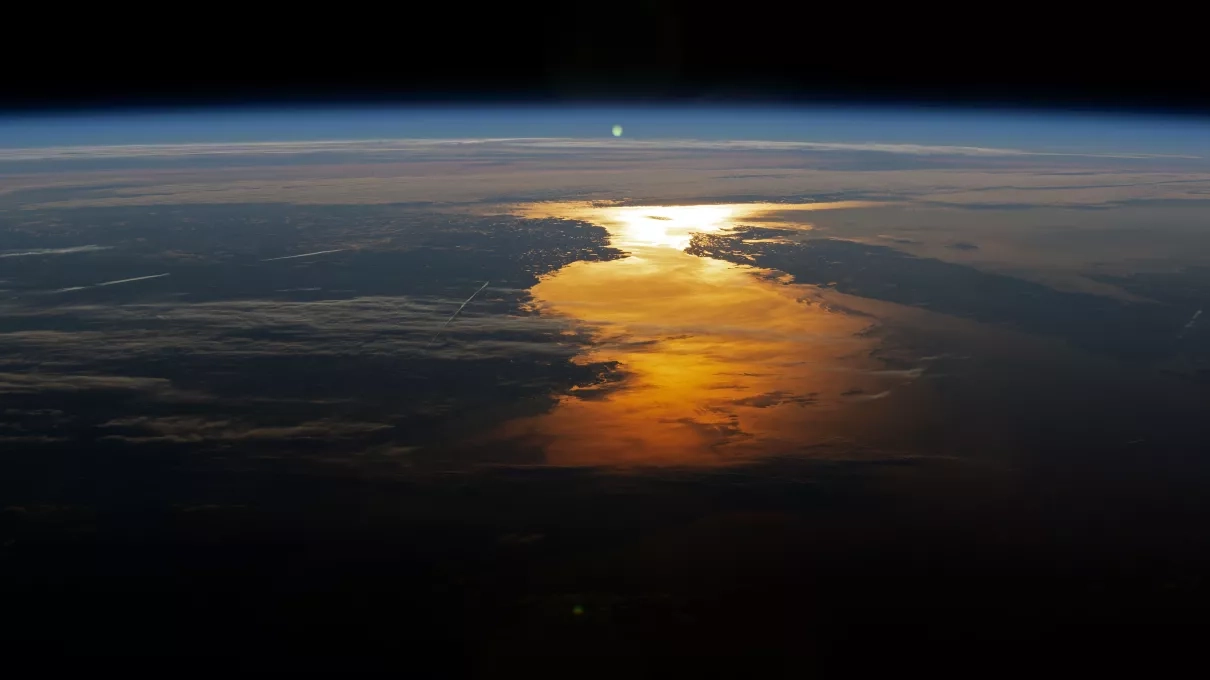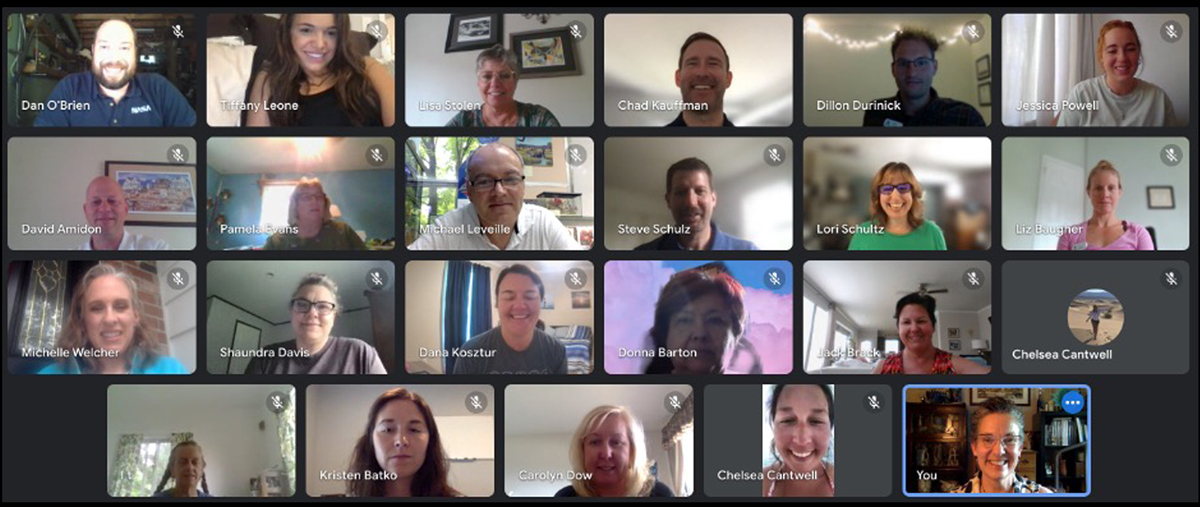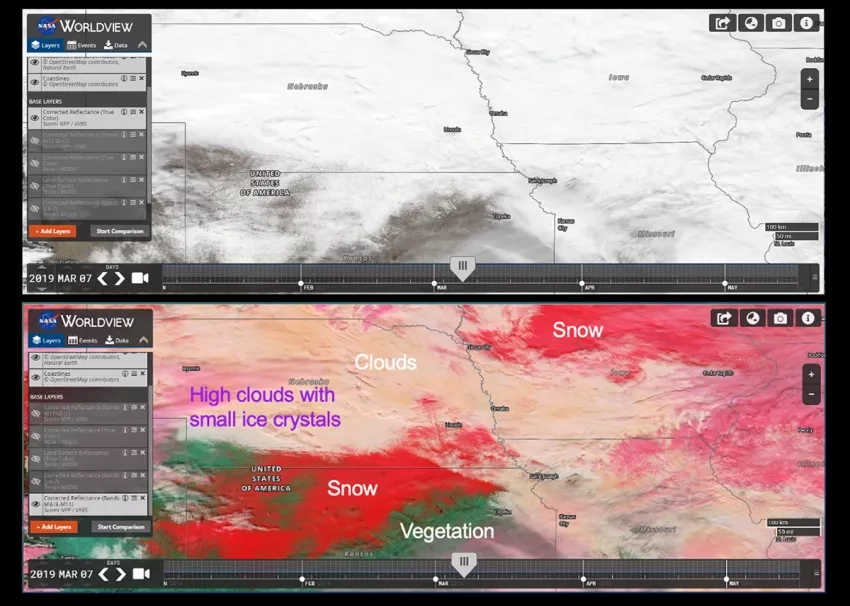Scientific innovation begins in the classroom when a dedicated teacher inspires a curious student, and that student goes on to pursue the sciences and contribute to the endless sea of scientific advancements that steer our society toward a more sustainable and informed future. However, inspiring tomorrow’s scientists is no simple task. To help teachers achieve this goal, the NASA Disasters program took part in a professional development course for teachers created by the American Meteorological Society’s (AMS) Education Program. The course is aimed at generating interest and understanding in science, technology, and mathematics among pre-college students.
The course, called Project Atmosphere, is specifically designed to share the latest atmospheric resources and information with teachers whose science classes have an atmospheric component. “Science is constantly changing and progressing and growing, mentioned Linda Brack, a Texas middle school teacher who attended Project Atmosphere. “I was able to get more up-to-date resources and websites to use to understand the information better. That’ll really help give the students a bigger picture.” The program hosts around 25 participants representing a wide national geographic distribution and a cross-section of school environments (inner-city, urban, suburban, and rural). These participants can use Project Atmosphere to expand their knowledge on a subject, update their curriculum for the upcoming school year, and even make connections with other bright science educators. “I decided to use some of the resources that were shared with us to try and implement them into my curriculum and give the students a more hands-on, research-based, project-based system. That will hopefully allow them to experience the way real scientists use the data to make things happen,” said Daniel O’Brien, a Pennsylvania high school teacher and participant in Project Atmosphere.
Although this summer’s Project Atmosphere was entirely virtual due to COVID-19 restrictions, teachers still found the course to be a valuable experience. David Amidon, a New York teacher, elaborated, “You don’t know what you don’t know, and these experiences allow you to learn from the experts. You can’t pass on anything to the classroom unless you’ve had that experience. Once you see things in action, it becomes more real to you, and you can pass that on to your kids.” Regardless of the pandemic, it is clear that this remote academic workshop will play an influential role in how the participants move forward with their lesson plans.
The NASA Disasters Program and Project Atmosphere
The NASA Disasters program aims to enable resilient communities in advance of disasters. One way the program accomplishes this goal is through sponsoring outreach and educational initiatives such as Project Atmosphere. The project’s ability to reach younger populations aligns well with NASA’s desire to get people engaged in atmospheric science at earlier ages, thus prompting the Disasters program to get involved with Project Atmosphere.
Dr. Louis Uccellini, director of the National Weather Service, former NASA scientist, and past president of the AMS expressed excitement about NASA becoming a sponsor for Project Atmosphere, bringing NASA's enormous capabilities in space observations of Earth to the fingertips of some of the best teachers in the United States. "Given my interaction with more than 600 of the teachers selected for Project Atmosphere over a 30-year period, I can say without a doubt that these teachers will be the force multipliers for all NASA brings to their classrooms, as they have been for the National Weather Service. These teachers work to excite as they educate the next generation of scientists throughout the country.”
During the event, Lori Schultz, Disasters program center coordinator for NASA’s Marshall Space Flight Center, gave a thorough presentation on how NASA monitors natural hazards before, during, and after disasters. In her presentation, Schultz used multiple, real-world case studies to describe how anyone can apply NASA products to study disaster events, and in turn, provide decision-makers with a reliable foundation to make informed choices. “Sharing science knowledge that most people will find intimidating and making it fun, making it accessible, making it something that you can relate to – that’s not just for kids, that’s for anybody,” she explains. “Being intimidated by science is half of the reason that we don’t have scientists.”
Schultz’s inclusive approach to communicating science reflects NASA’s intent to inform people of all backgrounds about the many ways in which they can benefit from NASA’s disaster products. Project Atmosphere participants were no exception. “I think Lori Schultz did an amazing job talking us through NASA Worldview, which is certainly something that I’m going to incorporate into my class,” O’Brien added enthusiastically. Through Project Atmosphere, the NASA Disasters program and the AMS can continue to grow the public’s knowledge on atmospheric sciences while inspiring the next generation of scientists.






